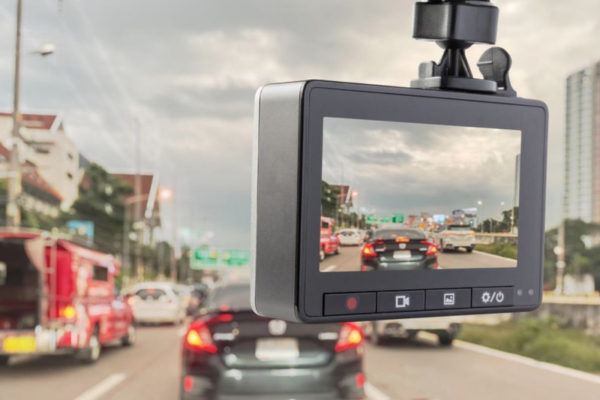
Several new technologies have emerged to assist in trucking collision analysis, revolutionizing how accidents are understood, prevented, and resolved. These technologies enhance the precision and speed with which incidents can be analyzed, offering valuable insights into causes, liabilities, and safety improvements. Here’s a comprehensive look at how these advancements are transforming trucking collision analysis.
Telematics Systems
Telematics has become a cornerstone technology for modern trucking, providing detailed real-time data about vehicle performance, location, driver behavior, and environmental conditions. These systems rely on GPS, accelerometers, gyroscopes, and other sensors to continuously monitor a truck’s movements. In the event of a collision, telematics data can offer a minute-by-minute breakdown of the vehicle’s speed, braking patterns, steering inputs, and other variables just before the accident. This data is invaluable for reconstructing the accident and determining whether driver error, mechanical failure, or environmental factors contributed to the crash.
For instance, telematics can detect hard braking or sharp turns, which may indicate an evasive maneuver or dangerous driving, while speed data can verify whether the truck is exceeding the limit. Furthermore, many telematics systems now integrate with other sensors and cameras, providing an even more comprehensive picture of the event.
Dash Cameras and In-Cab Cameras
Video footage from dash and in-cab cameras has become essential in collision analysis. These cameras can capture the moments leading up to and during a crash from multiple angles, helping investigators understand the sequence of events. They often provide crucial evidence, such as whether another vehicle abruptly changed lanes or cut off the truck or if the truck driver was distracted, drowsy, or impaired.
Some systems are equipped with AI-powered analytics that detect risky real-time behaviors, such as driver fatigue, distraction, or even seatbelt use. Combined with telematics data, this footage creates a clearer and more reliable narrative of the accident, minimizing subjective interpretations.
LiDAR and Radar Systems
Advanced sensor technologies like LiDAR (Light Detection and Ranging) and radar are increasingly used in collision avoidance systems, and their data can also be utilized in post-accident analysis. LiDAR systems use laser pulses to map the environment around a vehicle, while radar systems measure distances and velocities of surrounding objects.
In the event of a collision, data from these sensors can be analyzed to understand the positions and speeds of nearby vehicles, objects, or pedestrians. LiDAR can recreate a 3D map of the truck’s surroundings, offering detailed insights into the accident scene, including road conditions, obstacles, and the positions of other vehicles. These data points can help analysts determine whether the accident was avoidable and, if not, where failures in the system occurred.
Event Data Recorders (EDRs) and Electronic Logging Devices (ELDs)
Event Data Recorders (EDRs), often referred to as “black boxes,” and Electronic Logging Devices (ELDs) are critical tools for post-crash investigation. EDRs automatically record crucial information in the moments leading up to and during a collision, such as speed, throttle position, brake application, and airbag deployment. ELDs, on the other hand, track driver hours of service and compliance with federal regulations, providing a record of whether fatigue may have played a role in the crash.
Both EDRs and ELDs provide forensic data that is difficult to dispute, making them valuable for insurance claims, legal cases and improving fleet safety protocols.
Drones and Aerial Imaging
Drones are now being deployed in collision analysis, particularly in complex or large-scale accidents involving multiple vehicles or hazardous cargo. Aerial imaging can provide a comprehensive view of the accident scene, helping to map out the positions of vehicles, skid marks, and debris from above. This bird’s-eye view can reveal important details that might be missed at ground level, such as the layout of the accident site and the exact location of impact points.
Drones equipped with high-resolution cameras and sensors can quickly capture data, helping accident reconstruction teams build accurate 3D models of the crash. These models are particularly useful in court cases, where visual aids can clarify the events leading up to the collision.
Artificial Intelligence (AI) and Machine Learning
AI and machine learning are playing an increasingly prominent role in trucking collision analysis. By analyzing vast amounts of data collected from telematics, cameras, sensors, and EDRs, AI can identify patterns and correlations that might not be immediately apparent to human investigators. For example, AI systems can detect subtle driver behaviors that increase the risk of accidents, such as consistently late braking or frequent lane changes.
Machine learning algorithms are also being used to improve accident reconstruction models. By feeding historical accident data into these systems, AI can predict how certain factors—like weather, road conditions, and vehicle load—might have influenced the collision. This allows investigators to test different scenarios and determine the most likely causes of the crash.
Augmented Reality (AR)
AR technology is an emerging tool in accident reconstruction, allowing investigators to overlay digital information onto the physical crash scene. AR systems can project data from telematics, cameras, and sensors directly onto a view of the accident site, helping investigators visualize the sequence of events more clearly.
For example, AR can simulate how the truck moved in the moments before the crash, showing how various factors like speed, braking, and steering contributed to the incident. This technology provides a dynamic and interactive way to analyze accidents, improving accuracy and helping stakeholders—such as law enforcement, legal teams, and insurance adjusters—make more informed decisions.
Contact a Florida Personal Injury Lawyer
If you have been involved in a personal injury incident, seeking legal advice is essential to protect your rights. Our legal team has more than 40 years of experience seeking justice for accident victims. Our attorneys have sought and won millions of dollars for our injured clients.


